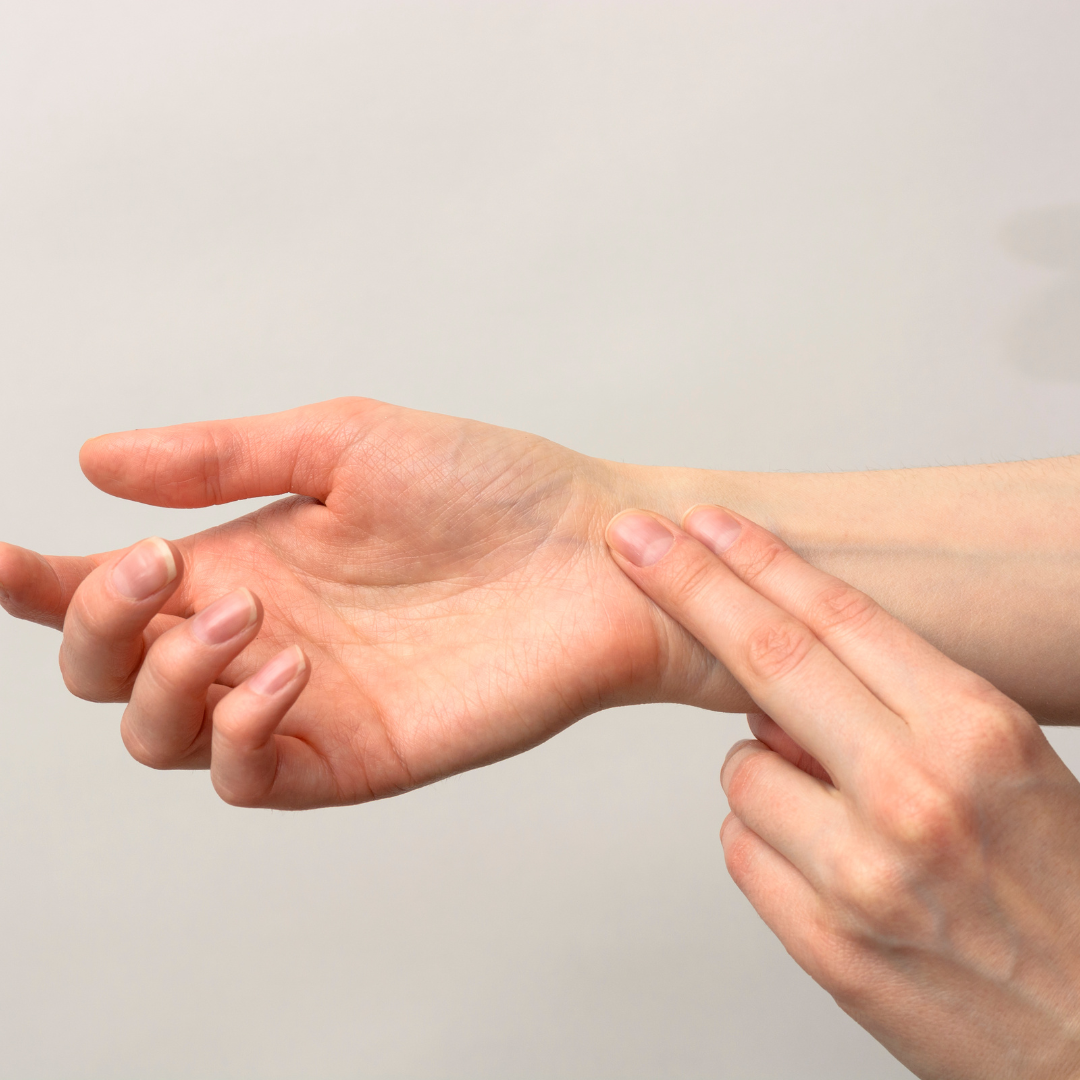Postural Orthostatic Tachycardia Syndrome, or “POTS”, commonly affects people with Ehlers-Danlos Syndrome (EDS)[1]. In simple terms, POTS involves blood pooling in the lower body due to stretchy veins, which results in less blood flowing to the head. This drop in blood flow triggers the fight or flight response (autonomic nervous system) to increase the heart rate, which results in less time for the heart to fill before each pump, (which reduces the blood flow further) making the blood flow problem worse.
Because POTS effects blood flow to the brain, there can be a wide variety of symptoms, such as light-headedness, exercise intolerance, fatigue and brain fog. From a physiotherapy perspective, the aim is to avoid an increase in blood pooling and calm the fight or flight response.
Exercise recommendation for people with POTS
- Maintain hydration/electrolyte balance to provide sufficient blood pressure to fill the heart and reach the head.
- Avoid eating an hour before exercise to avoid blood pooling around the digestive tract.
- Wear firm fitting, high-waisted sports tights to limit blood pooling in the lower body and to improve body awareness (proprioception).
-
Start by exercising small amounts often, maybe even a few minutes per hour.
- Too much exercise can exacerbate fatigue, and intense exercise can even result in a “crash” that takes you out of action for the next day or so.
- Avoid holding your breath (Valsalva), overly hot or cold environments, exercises that are particularly painful, and exercises that make you feel particularly worried that you might hurt yourself, as these may be POTS triggers.
A gentle start
An example of how I like patients to start exercising to reduce the risk of POTS is to start by having people lie on their back (it can be on the bed or couch) to help blood flow to the brain, and then take some slow relaxed breaths for about five minutes to calm their fight or flight system. I then ask them to activate their pelvic floor (so as to avoid exacerbating prolapse, which is more common in EDS) and maintain a steady breathing rate. Once they can both engage and switch off their pelvic floor while maintaining a smooth breathing pattern, they can move into some gentle Pilates style leg lifting exercises (for example: Pilates table top level 1). Of course, all exercise programs should be personalized to that person’s specific conditions and goals.
Want to read more of Aaron’s articles on EDS, click here.
- Australian POTS Foundation 2023, accessed January 25, 2023, <https://potsfoundation.org.au/>
- Hakim A, O’Callaghan C, De Wandele I, Stiles L, Pocinki A, Rowe P. Cardiovascular autonomic dysfunction in Ehlers-Danlos syndrome-Hypermobile type. Am J Med Genet C Semin Med Genet. 2017 Mar;175(1):168-174. doi: 10.1002/ajmg.c.31543. Epub 2017 Feb 4. PMID: 28160388.




